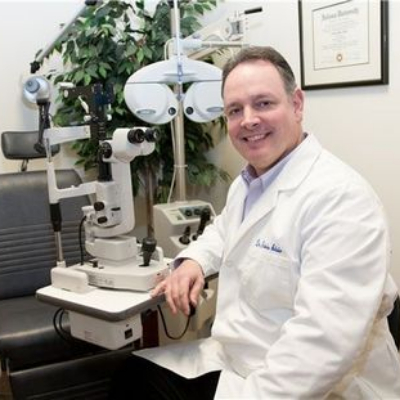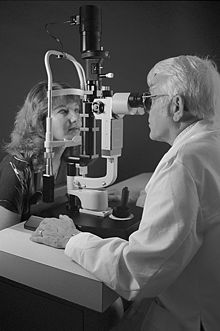Why Choosing an Eye Doctor Optometrist is Important for Your Eyes
Why Choosing an Eye Doctor Optometrist is Important for Your Eyes
Blog Article
Discovering the most recent Technological Innovations in Optometry and What They Mean for Optometrists
In the ever-evolving field of optometry, recent technological developments are reshaping just how experts approach eye care. From the accuracy of Optical Comprehensibility Tomography to the nuanced understandings offered by AI-driven analysis devices, these developments are setting brand-new standards in client analysis and therapy. Teleoptometry is positioned to redefine access, making sure that proficiency goes beyond geographical limitations. As these advancements penetrate the practice, eye doctors are encountered with the challenge of embracing these devices to improve individual results. Yet, the inquiry continues to be: exactly how will these technical changes redefine the functions and duties within the occupation?
Innovations in Diagnostic Tools
Progressing the field of optometry, technologies in analysis devices have revolutionized the means eye treatment experts analyze and diagnose eye conditions and visual impairments. The previous decade has experienced substantial technical improvements, allowing even more extensive and accurate analyses. Optical Comprehensibility Tomography (OCT), for instance, gives high-resolution cross-sectional images of the retina, enabling the very early detection of illness such as glaucoma and age-related macular deterioration. This non-invasive imaging strategy has actually become crucial in contemporary optometric technique.
An additional secret technology is the introduction of innovative corneal topography systems, which map the surface area curvature of the cornea with precision. These devices are specifically valuable for fitting call lenses and identifying corneal disorders. Electronic retinal imaging has actually changed typical ophthalmoscopy, using thorough, scenic views of the retina that help with thorough aesthetic evaluations.
The development of wavefront aberrometry has actually likewise been vital, making it possible for the analysis of refractive errors with unequaled accuracy (Eye Doctor Optometrist). This modern technology assists in customizing restorative lenses and boosting medical end results for refractive surgeries. Collectively, these analysis improvements equip eye doctors to deliver exceptional client care, making sure early intervention and customized treatment approaches, ultimately boosting aesthetic health and wellness outcomes
AI in Patient Management
Structure on the foundation of advanced analysis devices, the incorporation of man-made knowledge (AI) in patient monitoring stands for a transformative jump for optometry. AI systems are progressively utilized to boost performance, precision, and customization in patient treatment.
Furthermore, AI-driven systems help with streamlined individual interactions and management procedures. Automated scheduling, digital appointments, and individualized follow-up plans not only improve client contentment however also optimize time management for experts. These systems can triage patients based on the necessity of their problems, making certain that those in vital need obtain prompt attention.
In addition, AI improves decision-making by providing optometrists with evidence-based referrals and treatment pathways. By integrating information from electronic health documents, AI devices supply understandings that educate scientific choices, decreasing the risk of mistakes and boosting patient end results. As AI proceeds to advance, its duty in individual monitoring will likely broaden, improving the landscape of optometric treatment.
Advancements in Retinal Imaging
In the realm of optometry, retinal imaging has actually experienced amazing technical advancements that are improving diagnostic abilities and individual care. Innovations such as Optical Coherence Tomography (OCT) and fundus photography have transformed exactly how optometrists imagine and analyze the retina. OCT, specifically, gives high-resolution, cross-sectional photos of the retina, enabling the thorough assessment of its layers. This ability is indispensable for early detection and monitoring of problems like glaucoma, diabetic retinopathy, and age-related macular deterioration.
Enhanced imaging methods like OCT angiography are additional refining analysis precision. This non-invasive strategy maps blood flow in the retina, offering essential insights right into vascular health without the requirement for dye shots. In addition, adaptive optics technology is being incorporated into retinal imaging systems to deal with ocular aberrations, delivering unmatched image clearness. Such advancements assist in the recognition of minute retinal adjustments that could indicate disease development.
In addition, advancements in man-made knowledge are augmenting retinal imaging by allowing computerized analysis of huge datasets. These systems assist optometrists in identifying patterns indicative of pathology, consequently boosting analysis precision and efficiency. Collectively, these advancements are changing retinal imaging right into a keystone of modern-day eye care, improving outcomes and broadening restorative opportunities.
Teleoptometry's Expanding Duty
Teleoptometry is progressively ending up being an important component of eye treatment, driven by improvements in digital interaction and analysis tools. This is specifically valuable in underserved and country locations where access to specialized eye treatment is commonly restricted.
The integration of expert system (AI) further boosts teleoptometry, allowing the evaluation of visual information and helping in the detection of eye conditions such as glaucoma and diabetic person retinopathy. AI-powered algorithms can swiftly translate intricate imaging data, offering optometrists with important understandings that strengthen clinical decision-making.
Additionally, teleoptometry supports continuity of treatment via seamless integration with electronic health documents (EHRs), permitting optometrists to keep extensive person histories. This ensures that individuals receive individualized and regular care also when speaking with different professionals.
In spite of these benefits, obstacles remain, including making certain data protection and managing client assumptions. Teleoptometry represents a significant stride towards more available, effective, and patient-centered eye treatment. As modern technology advances, its function is poised to increase additionally.

Future Fads in Eye Treatment
A myriad of cutting-edge fads is established to improve the future of eye treatment, driven by technical developments and the advancing demands of patients. One substantial fad is the assimilation of expert system (AI) in diagnostics, which promises to enhance the precision and efficiency of read eye evaluations. AI algorithms can analyze substantial quantities of data from retinal images, potentially spotting conditions like diabetic person retinopathy and glaucoma earlier than standard techniques.
Furthermore, customized medicine is obtaining grip in optometry, with genetic screening notifying personalized therapy strategies. This method aims to maximize individual results by tailoring treatments check these guys out to private genetic accounts. Wearable innovation, such as clever call lenses, is likewise imminent, supplying real-time tracking of intraocular pressure or glucose degrees, therefore providing continual insights right into systemic and ocular health.
The fostering of enhanced truth (AR) and virtual truth (VR) in training and person education is an additional emerging pattern. These technologies supply immersive experiences that can enhance understanding and abilities both for patients and optometrists. As these fads develop, eye doctors must stay abreast of technical developments to give innovative treatment, ensuring enhanced person outcomes and contentment in the dynamic landscape of eye treatment.
Conclusion

Jointly, these diagnostic advancements encourage optometrists to deliver superior person care, guaranteeing very early treatment and tailored therapy techniques, ultimately boosting visual health end results.

As these modern technologies proceed to develop, eye doctors must adapt and include them into practice, eventually maximizing operations efficiency and raising the requirement of eye treatment supplied to patients.
Report this page